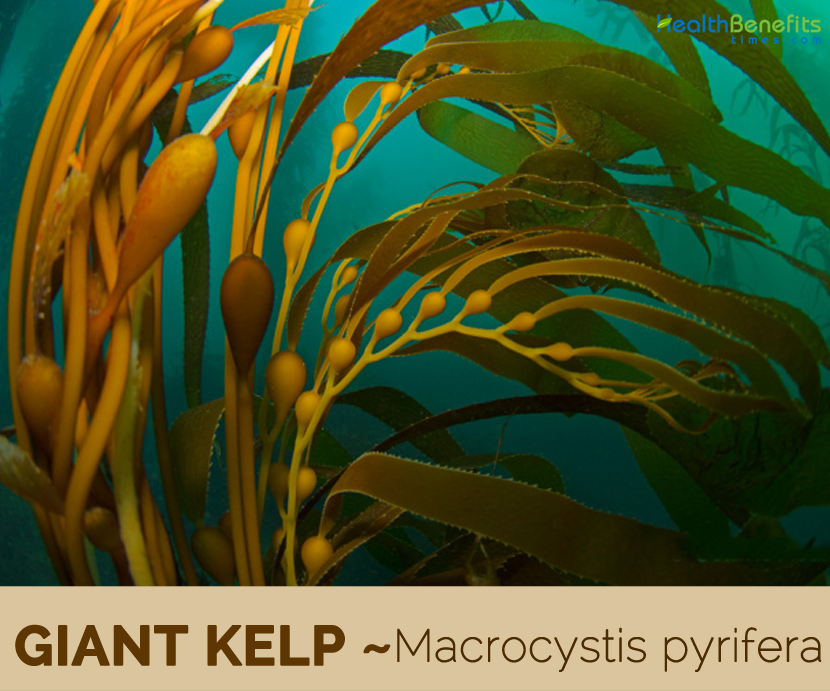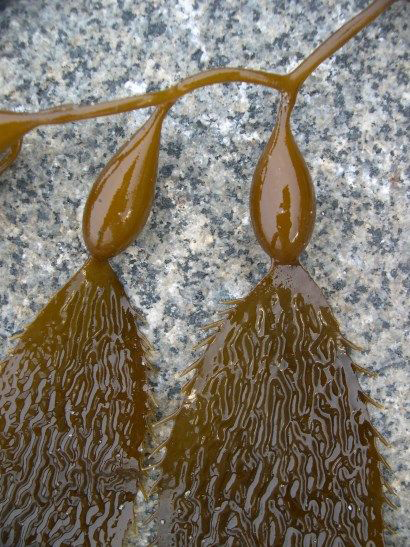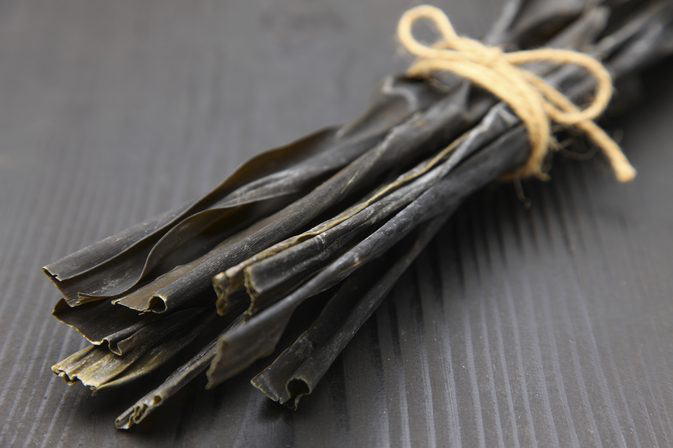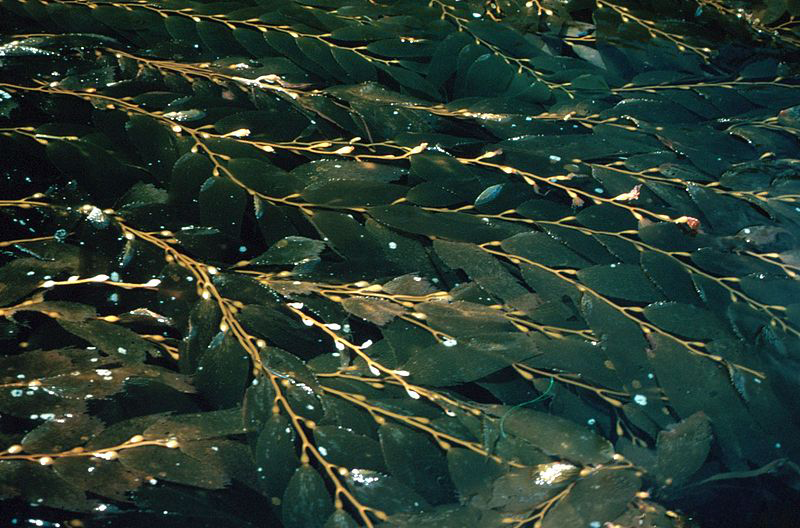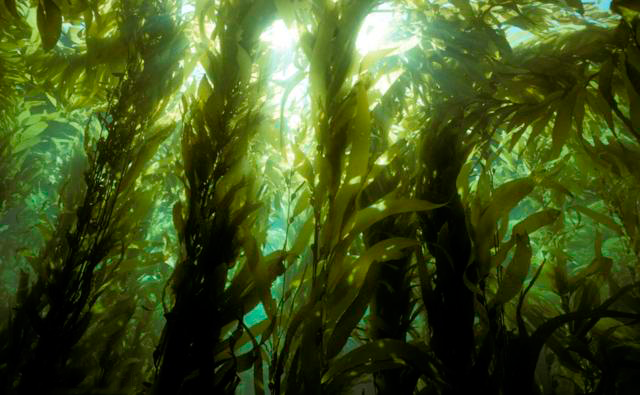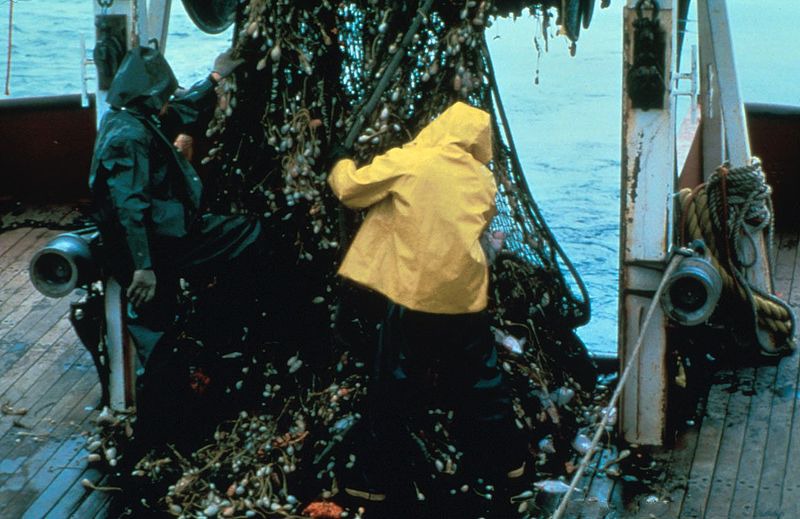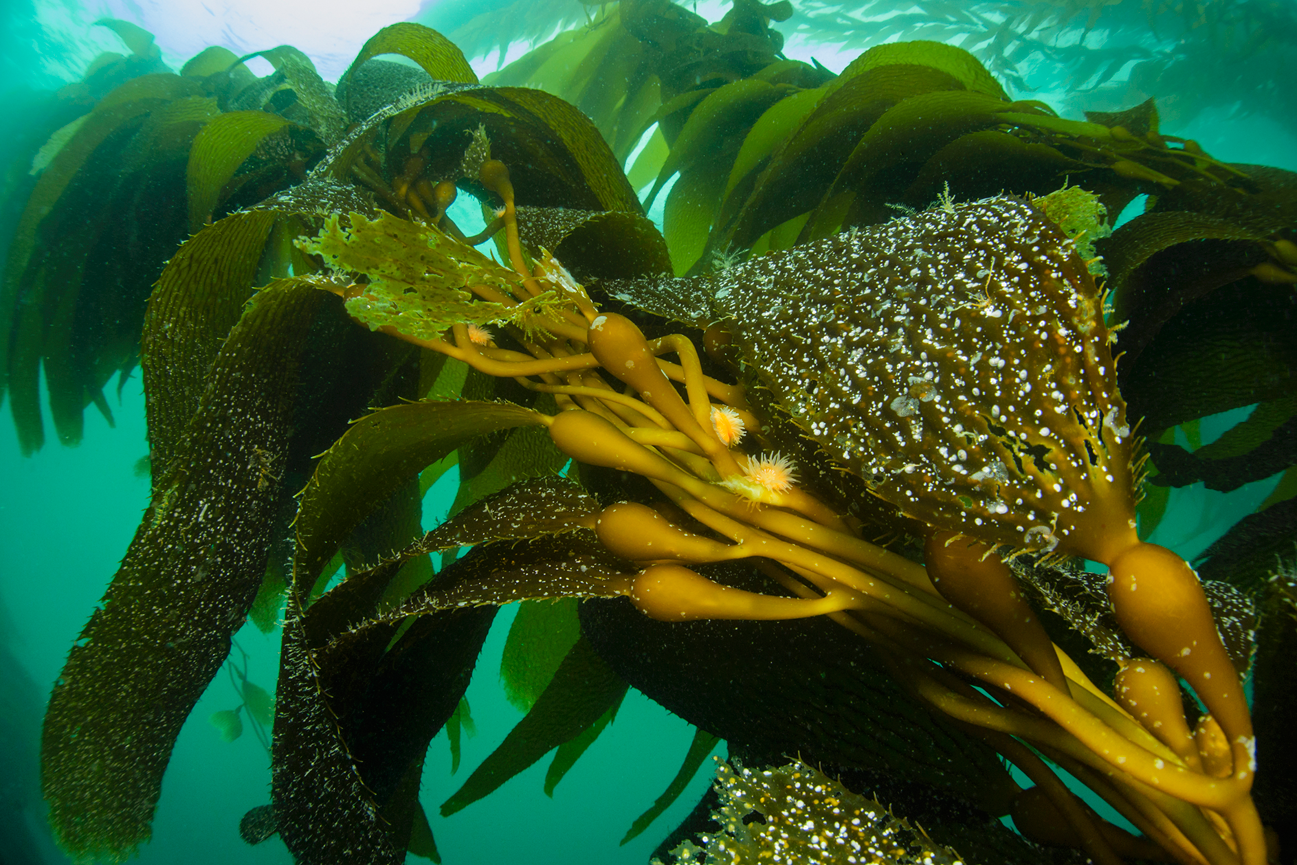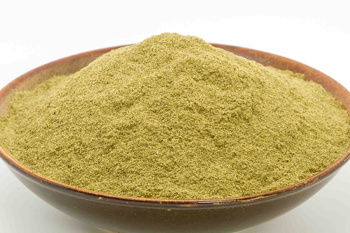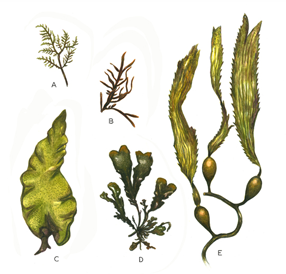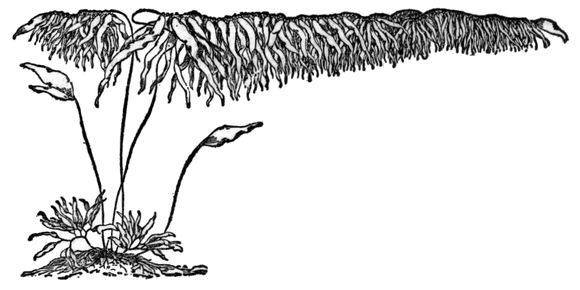Plant Description
Giant Kelp is fastest-growing perennial seaweed that can grow at a rate of 2 ft. a day to reach over 40 to 65 meters (44 to 71 yards) in height in one growing season. The plant can be found growing on rocky shores of all world seas and oceans. Giant kelp grows directly upon their parent female gametophyte. To establish itself, young kelp produces one or two primary blades, and begins a basic holdfast, which serves to anchor the plant to the rocky bottom. As the kelp grows, additional blades develop from the growing tip, while the holdfast enlarges and may entirely cover the rock to which it is attached. Growth occurs with lengthening of the stipe (central stalk), and splitting of the blades. At the growing tip is a single blade, at the base of which develop small gas bladders along one side. As the bladders and stipe grow, small tears develop in the attached blade. Once the tears have completed, each bladder supports a single separate blade along the stipe, with the bladders and their blades attached at irregular intervals. Giant kelp forests support and protect many marine species such as sea urchins, sea stars, crabs and many species of fish.
Health Benefits of Giant Kelp
Giant Kelp is an edible brown seaweed that is rich in vitamins and minerals especially iodine. It has been traditionally used as natural iodine source and largely known for its health benefits for proper thyroid functions. It can also be used in cooking in many of the ways other sea vegetables are used, and particularly serves to add flavor to bean dishes. Let’s take a closer look at the health benefits that the plant provide to our body
1. Protects Thyroid Health
Iodine is one of the most important elements in our thyroid gland and it helps to regulate hormonal function throughout the body. Giant kelp consists of good amount of iodine which helps in proper functioning of the thyroid health. Proper amounts of iodine guarantee a functional metabolism and proper enzymatic activity throughout the body. Giant kelp should be used frequently to solve all the thyroid related problems. (1)
2. Improves Bone Mineral Density
Giant kelp consists of impressive amount of minerals (more than 40!), including essential minerals like calcium, boron, zinc, copper, and manganese all ensure that our bones remain strong and that any bone damage heals quickly. Healthy diet of giant kelp can help to prevent the start of osteoporosis or other bone mineral deficiencies. (2)
3. Prevents Cancer
Talking about antioxidants, giant kelp is a wonderful source of vitamin C and other vitamins that are shown to be effective in seeking out free radicals and neutralizing them. Additionally, it contains “fucoidan”, which induces apoptosis, or cell death, in cancer cells, while leaving healthy cells alone. Giant kelp is often consumed specially by women in Asia because of its proven record against breast cancer. (3)
4. Increases Protein Content
Giant Kelp consists of 16 different amino acids, which are the building blocks of protein. By helping to boost the protein content in our body, giant kelp help us regulate cellular growth, wound healing, muscle development, organ function, and a wide range of other necessary bodily processes that require proteins. (4), (5)
5. Stay Slim With Kelp
If you are trying to lose weight, giant kelp is one of the best options. Giant kelp has shown anti-obesity properties in many researches. The effect of fucoxanthin in fighting fat, however, is maximized by adding other elements like pomegranate oil to it.
6. Maintains pH Balance
As a distinctly alkaline food, giant kelp helps to maintain the acid-base balance in our body, which is vital for many bodily processes and digestion. (6)
7. Works against Inflammation and Bone Loss
Giant kelp consists of good amount of anti-inflammatory property. It is highly recommended to have foods that prevent inflammation to avoid many diseases including cancer. Here too fucoidan plays an important role. Apart from this property, having giant kelp as you age is very beneficial as it can prevent bone loss. It also increases bone density and bone ash weight.
8. Prevents Radiation Effects
As we have mentioned before giant kelp consists of high levels of iodine, which can actually prevent the uptake of irradiated iodine by the thyroid gland, thus protecting the body from the disastrous effects of radiation poisoning, which often leads to cancer. This herb is especially important in Japan, following the radiation disaster at Fukushima.
9. Fights Blood Disorders and Diabetes
Compound fucoidan found abundantly in brown algae like giant kelp is found to fight many blood disorders including blood pressure. It helps avoid blood clots and ischemic diseases.
Seaweeds like giant kelp can also control blood sugar level, lower blood lipids, and even reduce your risk for cardiovascular diseases related to diabetes.
Traditional uses and benefits of Giant Kelp
- The drug has also been confirmed to have an influence on the immune system, as well as antiviral qualities.
- Folk medication uses it to for weight reduction.
- The drug is used as a commercial pharmaceutical preparation in the U.S. for anemia in pregnancy.
- The drug is used for hypertension in Japan.
- Giant Kelp is useful in hair loss and nail growth.
- It is beneficial for poor digestion, constipation and flatulence and controls appetite.
- It helps to dissolves fatty wastes through the skin and may help control obesity.
- Giant Kelp has also been known to treat inflamed joints and tissues caused by arthritis and rheumatism.
- Giant Kelp enhances the immune system and eliminates the negative effects that stress may have on the body.
- Giant Kelp can also help to normalize overly low blood pressure.
Other facts
- Brown algae thallus serves chiefly as a source of iodine.
- Giant kelp has been used for years as a food supplement for many years because it contains iodine, potassium, other minerals, vitamins and carbohydrates.
- Giant Kelp products are also used in the manufacture of livestock and poultry feed, pharmaceuticals and fertilizers.
- It is often called the miracle plant due to its variety of therapeutic properties.
- Giant kelp is the earth’s largest ocean plant.
- With a potential growth rate of up to 60 centimeters (2 feet) daily, giant kelp is among the fastest growing wildlife known.
- Plant has historically been used to create potash, while in modern times it is used as a fertilizer; commonly as an emulsifier; and for chemical purposes in various industries.
- Giant kelp forests support and protect many marine species such as sea urchins, sea stars, crabs and many species of fish.
Precautions
- Some people are sensitive to seaweeds and sea vegetables and eating kelp may trigger allergic reactions such as itching, skin rash, hives, watery or itchy eyes, runny nose, and shortness of breath. Gastro-intestinal problems like nausea and diarrhea.
- Brown Kelp should not be used by individuals with a familial disposition to thyroid illness or hyperthyroidism.
- Long-term administrations of daily dosages that exceed 150 micrograms iodine carry with them the danger of worsening an existing hyperthyroidism.
- Nausea and diarrhea are potential kelp side effects and it is probably not a good idea to take kelp if you are sensitive to iodine.
- Excessive dosage (many times the recommended dosage in Biozest products) may lead to hyperthyroidism, tremor, increased pulse rate and elevated blood pressure.
References:
https://www.itis.gov/servlet/SingleRpt/SingleRpt?search_topic=TSN&search_value=11274#null
https://en.wikipedia.org/wiki/Macrocystis_pyrifera
https://sussle.org/t/Macrocystis_pyrifera
Comments
| Giant Kelp Quick Facts | |
|---|---|
| Name: | Giant Kelp |
| Scientific Name: | Macrocystis pyrifera |
| Origin | North America, South America, South Africa, New Zealand, and southern Australia |
| Taste | Mild salty taste when dry |
| Health benefits | Thyroid Health, Prevents Cancer, Increases Protein Content, Prevents Radiation Effects, Fights Blood Disorders and Diabetes |
| Name | Giant Kelp |
|---|---|
| Scientific Name | Macrocystis pyrifera |
| Native | North America (Alaska to California), South America, South Africa, New Zealand, and southern Australia |
| Common Names | Giant kelp or giant bladder kelp, Pacific kelp, brown kelp |
| Name in Other Languages | Arabic: ماكروسايكتس بايريفيرا Croatian: Divovski kelp English: Birnentang, Bladder kelp, Butterfish kelp, Giant Kelp, Kelp Finnish: Paarynakelppi, Päärynälevä German: Riesentang Italian: Kelp gigante Japanese: Ooukimo (オオウキモ) Norwegian: Kjempetare Polish: Wielkomorszcz gruszkonośny |
| Plant Growth Habit | Fastest-growing perennial seaweed |
| Growing Climate | Can be found on rocky shores of all world seas and oceans |
| Plant Size | 40 to 65 meters (44 to 71 yards) in height |
| Taste | Mild salty taste when dry |
| Plant Parts Used | Thallus |
| Available Forms | Tablets, powder or liquid |
| How to Eat |
|


